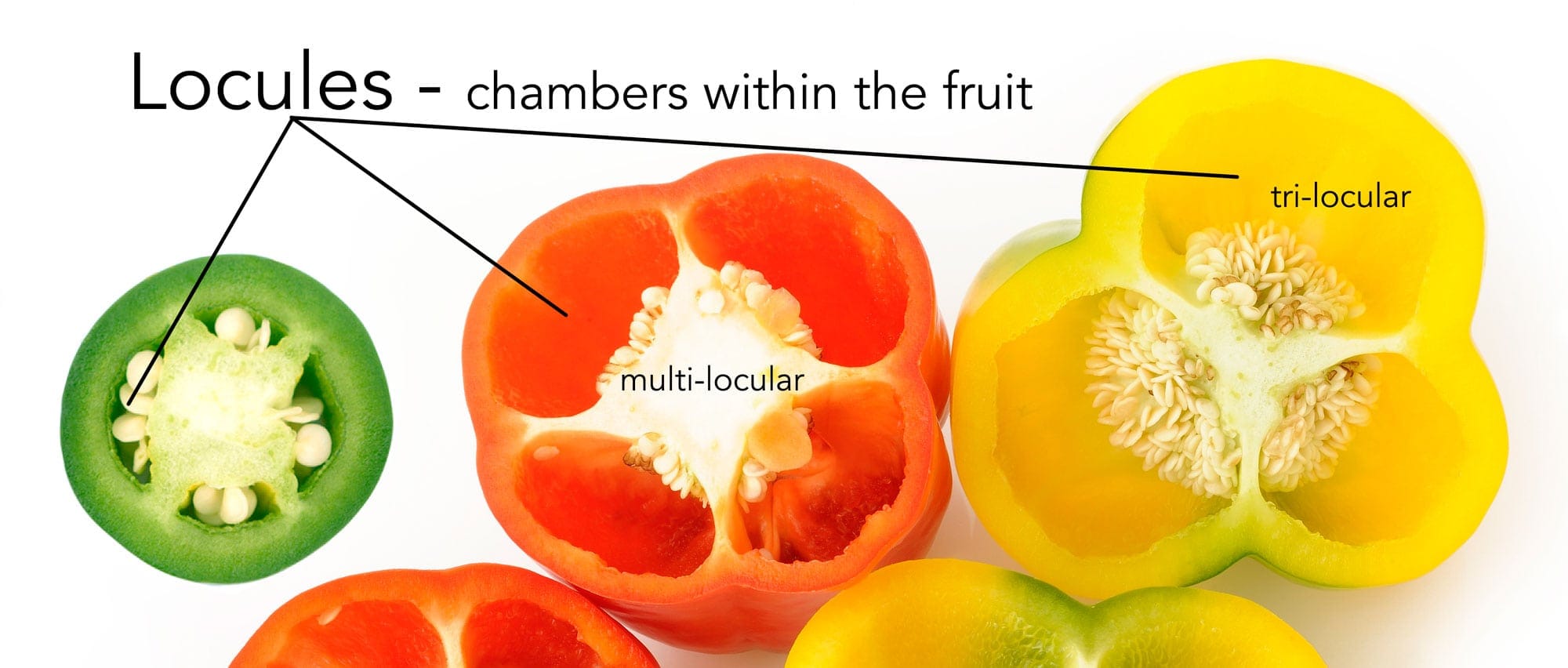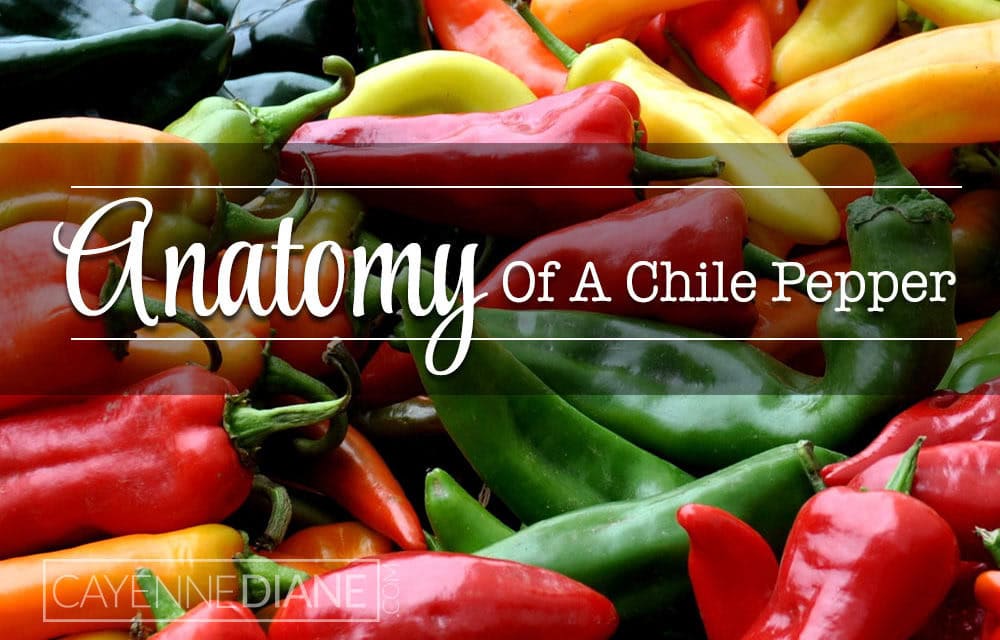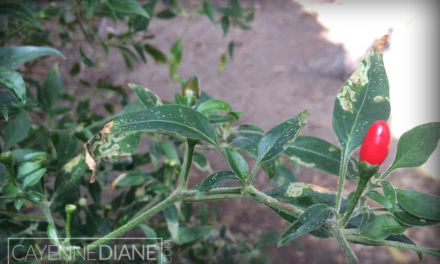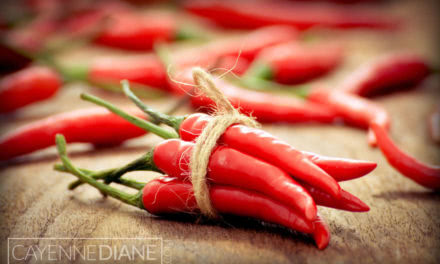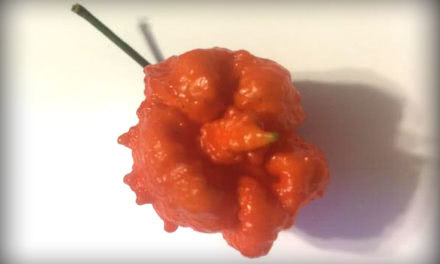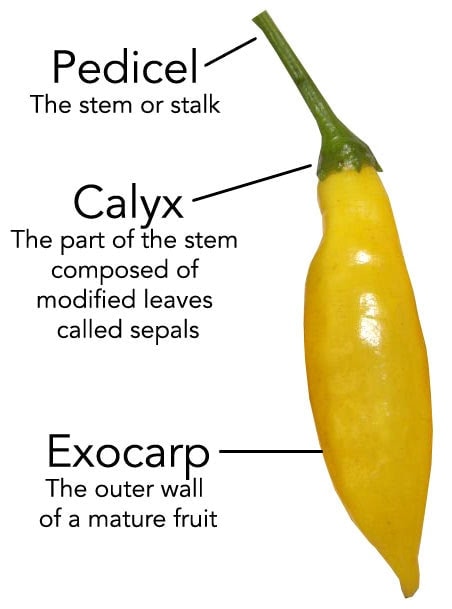
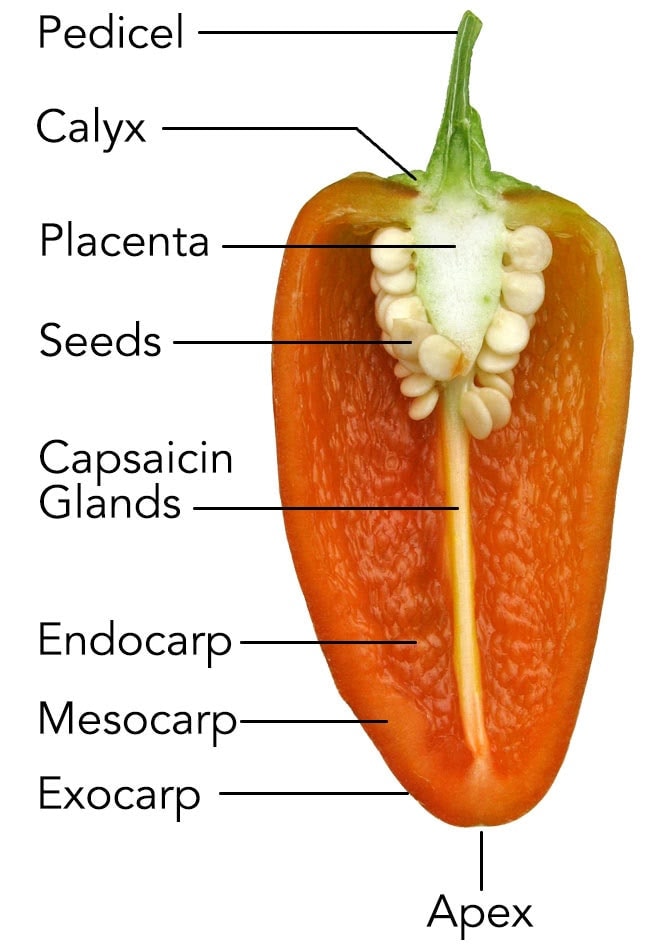
Pedicle: The stalk or stem of a single flower or fruit. The stem or branch from the main stem that holds a group of pedicels is called a peduncle.
Calyx: The part of the stem composed of modified leaves called sepals. Usually green, sepals function as protection for the flower in bud, and often as support for the petals when in bloom.
Seeds: The reproductive part of the plant.
Placenta & Capsaicin Glands: This is where the largest concentration of ‘heat’ in a pepper is located. Found along the placenta (which holds the seeds). Often referred to as the pith, removing this portion of the pepper will reduce the heat.
Endocarp: The inner wall of a mature fruit.
Mesocarp: The fleshy tissue of a fruit between the Endocarp and the Exocarp.
Exocarp: The outer wall of a mature fruit.
Apex: The blossom end of a mature fruit.
The ‘heat’ of a chile pepper is most concentrated in the placenta which contains Capsaicin Glands, also called the pith or ribs. The amount and thickness of the pith can vary considerably between different peppers, with some super hots having large amounts of placenta. If you want to remove some of the heat, remove the pith from your peppers.
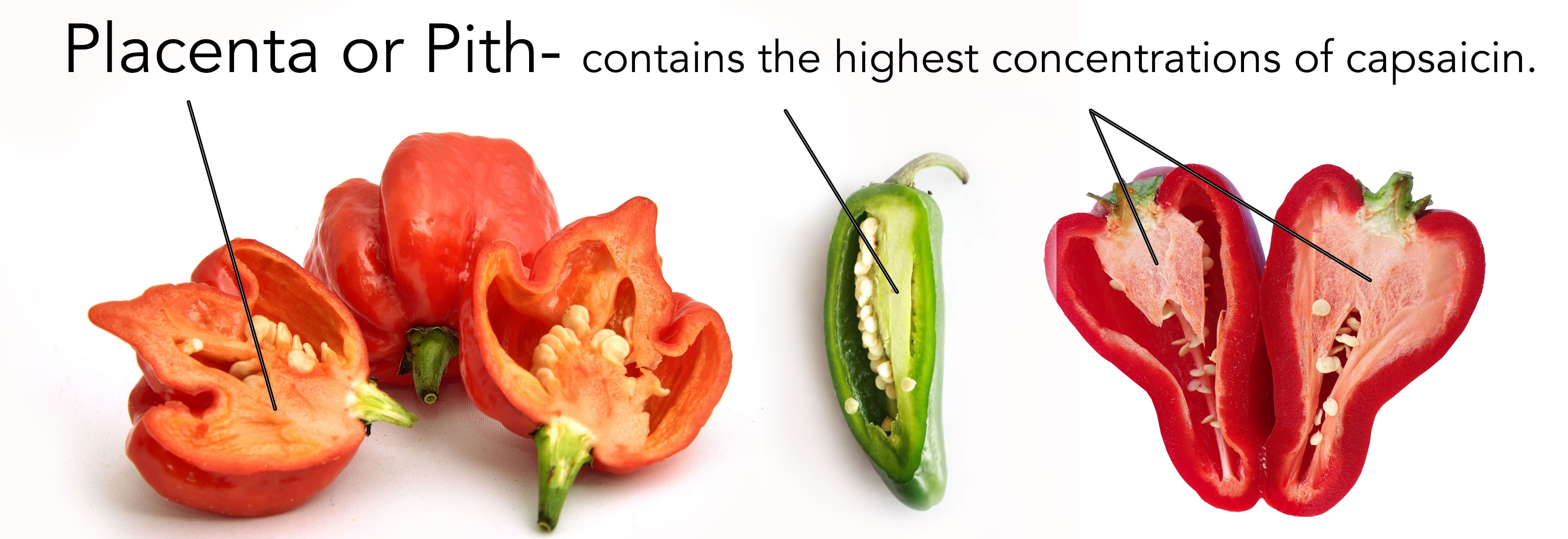
In flowering plants, the term locule (pronounced lock-yool, meaning “little place” in Latin) usually refers to a chamber within the fruit. Depending on the number of locules in the ovary, fruits can be classified as uni-locular, bi-locular, tri-locular or multi-locular. The locules contain the ovules or seeds.
